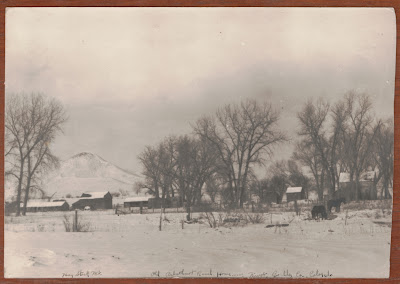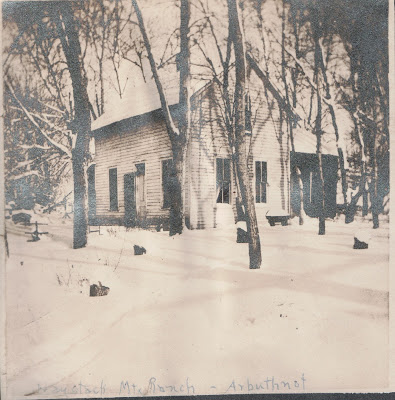In 1860, while a lawless territory of the United States, the gold camps soon established community camps or districts in the mountains of what is now Boulder County. The miners elected Presidents, Recorders (or Clerks) and Constables (aka Sheriffs) to keep the constitution (rules) that the miners had agreed upon for their district.
On October 31 of 1860, the Sugar Loaf Mining District was formed. Judges were chosen by the miners to hold an election to establish the President, Recorder and Constable for their area up what is now Wallstreet in Four Mile Canyon. Captain H. McHenry, D. E. Cole, were chosen as judges of the election with H. Blake as the recorder of the outcome of the election. My source does not have the number of miners who voted this day, but that they elected David Whitner without opposition as President, H. Blake as recorder with out opposition, and C. W. Arbuthnot was elected constable by majority. Also that night, a committee of five was appointed to write up a constitution to be presented in November 10th at 2PM, 1860. Signed by H. Blake, Clerk
(Sources: 4.)
It was the duty of these elected men to uphold the articles of the constitution.
The first Constable of the Gold Hill Mining District No. 1 was James Carlile, who had broken the rules by charging too much for services that he preformed as Sheriff. Article 4 of the Miner's Constitution clearly states that being guilty of this violation once would result in a fine being levied. But preform this violation twice, you lost your position within this mining camp. At a meeting the week before, a committee was assigned to investigate. The miner's minutes of December 15, 1860 records the report from that committee as well as the election of it's new Constable (or Sheriff), C. W. Arbuthnot. Interesting that Carson Arbuthnot is already serving as Sheriff of the Sugar Loaf District.
Here is the transcription of the minutes from that Saturday evening. (Any misspelling is that of the secretary who recorded these miner's minutes.)
Gold Hill of N.T. [Nebraska Territory]
Dec. 15, 1860
Miner’s meeting met presnent to adjournment meeting called to order by the President W. R. Blore. The minutes of the two previous meetings read and approved, the committee (appointed to draw off the fee bill and to examine and see if constable [Carlile] had charged more than fee bill allowed him to charge) was called to make their report.
Report of Committee
We the undersigned committee appointed to investigate and examine the papers returned to the President’s office by James Carlile during the time he was Constable of this district beg leave to report that they have attended to the duties assigned them and find that he has charged fifty cents for serving papers for which the law allows but twenty, and in the case of Collins against Pancost he has charged two dollars and seventy five cents mileage which is more than the law would allow under any circumstance, by at least one dollar and twenty five cents all of which is respectfully submitted.
P. M. Housel
Josiah Williams
M. L. McCaslin
Motion of the report of the committee be accepted and the committee be discharged, carried. The Fee Bill was then read as follows.
President’s Fees
1st. For trial occurring 2 days or less. $1.50
2nd. For trail occurring more than 2 days. $3.00
3rd. And at the rate of $3.00 for each after the first.
4th For issuing summons to defendant $.50
5th For issuing subpoena to witness $.50
6th For issuing writ of attachment $.50
7th For issuing execution or writ of Delivery $.50
8th For all bonds or affidavits or Docketry case of action, or for any instrument necessary to be written. $.75
Constable Fees
1st For serving summons on defendant venire on jurors subpoenas on witnesses each $.20.
2nd For each mile traveled to serve any writ subpoena or other instrument necessary to be served. $.25.
3rd For taking care of property such as horses mules or cattle coming into his hands all necessary expenses shall be allowed as may be decided by the President.
4th For posting notices in civil cases. $.20
5th For writing all bonds necessary to be taken by law. $.75
6th For each days attendance on court at a rate of $3.00 per day.
7th For serving Execution and making levy $.50.
8th For selling property three cents for any amount under $50. 2½ per cent for every amount under $150, and 2 per cent for all amount over $150.
Motion that the meeting proceed to the election of Constable. Carried on motion. Josiah Williams, James Smith, and M. L. McCaslin was apointed judges of election.
Robert Culver and E. S. Glotfelter was appointed clerks when the Polls was declared open, there was 41 votes polled of which C. W. Arbuthnot received 17, Jacob Purdy 15, David Lease 8, and P.M. Hosel 1. The Judges declared C. W. Arbuthnot Elected Constable.
The following resolutions was read and handed in to be acted on the next general meeting.
Resolve #1. That all actual residents of three months of this district be allowed to preempt one claim on every quartz lead [load] in this district.
Resolve #2. That when a tunnel is started on ay lead no claim shall be taken or preempted on said lead to interfere with the tunnel below the depth of fifty feet.
Motion to adjourn carried.
E. S. Glotfelter, Sec.
One interesting note:
P.M. Housel, a ruling elder of the Presbyterian Church in Boulder, only received one vote here, but was voted in as a Judge for Boulder County in 1862 and re-elected in 1864.
(Sources: 5.)































